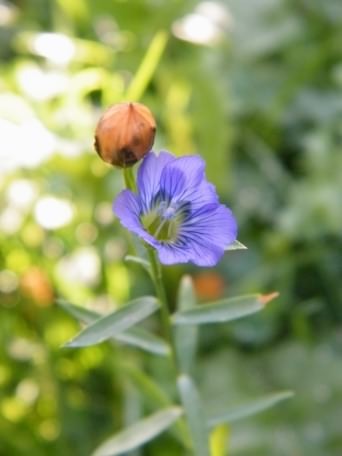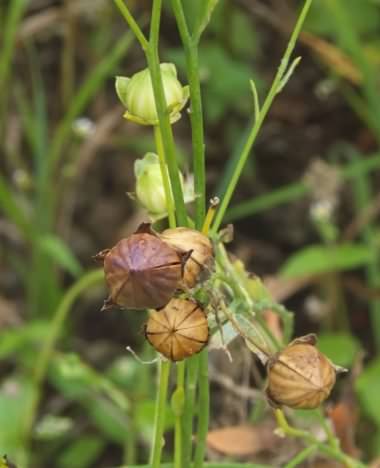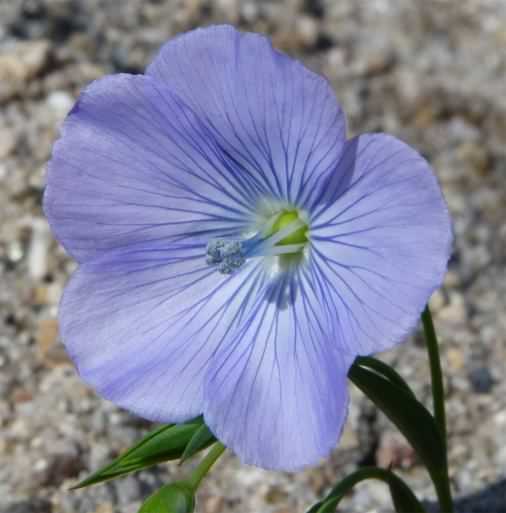
Photo ©2019–

Photo ©2009 Rasbak

Photo ©2014 Al Keuter
Click any photo for a larger image
Flax - Linum usitatissimum
Family - Linaceae
Also known as - Linseed
An annual herbaceous plant capable of growing in a variety of soils and climates world wide in temperate regions for food, oil and fiber production. grow to 1.2m (48in) tall, with slender stems. The leaves which are green glaucous and slender lanceolate 20–40mm (0.8–1.6in) long and 3mm (0.12in) wide, grow singly on the stem forming a loose spiral. Flowers are pale blue occasionally white or pink, 15–25mm (0.6–1in) in diameter having five petals with darker veining. They mature to a brown almost spherical pointed capsule composed of five lobes, 5–10mm (0.2–0.4in )in diameter containing glossy brown seeds 4–7mm (0.16–0.35in) long similar in shape shaped to an apple pip.
Flax has been cultivated for its fiber for thousands of years with advantages over cotton being a naturally smooth, straight and stronger material. When woven into cloth it is known as Linen. Linseed oil from the plant has been used in paints, putty, varnishes and printing inks with the by–product, Linseed meal, used as animal feeds. Flax remains economically significant in a number of countries around the world in spite of the prevalence of modern synthetic materials. The epithet, "usitatissimum" means "most useful".
BCP do not advise or recommend that Flax – Linum usitatissimum is eaten or used as an herbal remedy. Flax seed is apparently a popular as a health food for its nutritious edible seeds. It is a rich source of an omega–3 fatty acid and high in dietary fibre, protein, iron, calcium and can be eaten raw or toasted.
 Photo ©2019– |
 Photo ©2009 Rasbak |
 Photo ©2014 Al Keuter |
Click any photo for a larger image |
Site design ©1999– Brickfields Country Park - Privacy -